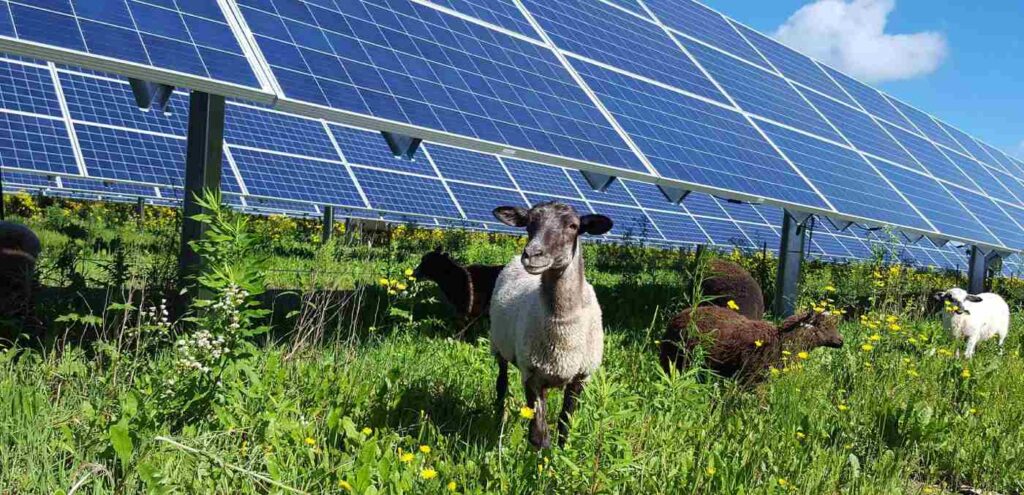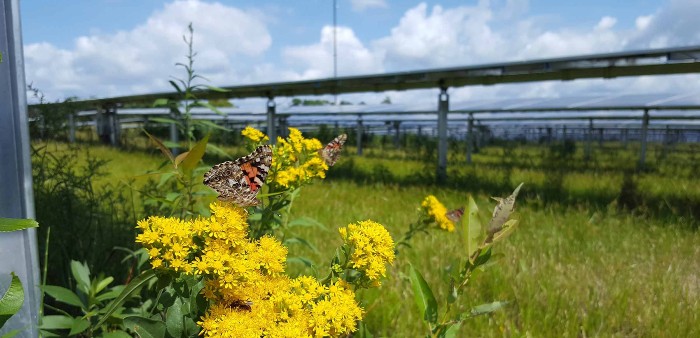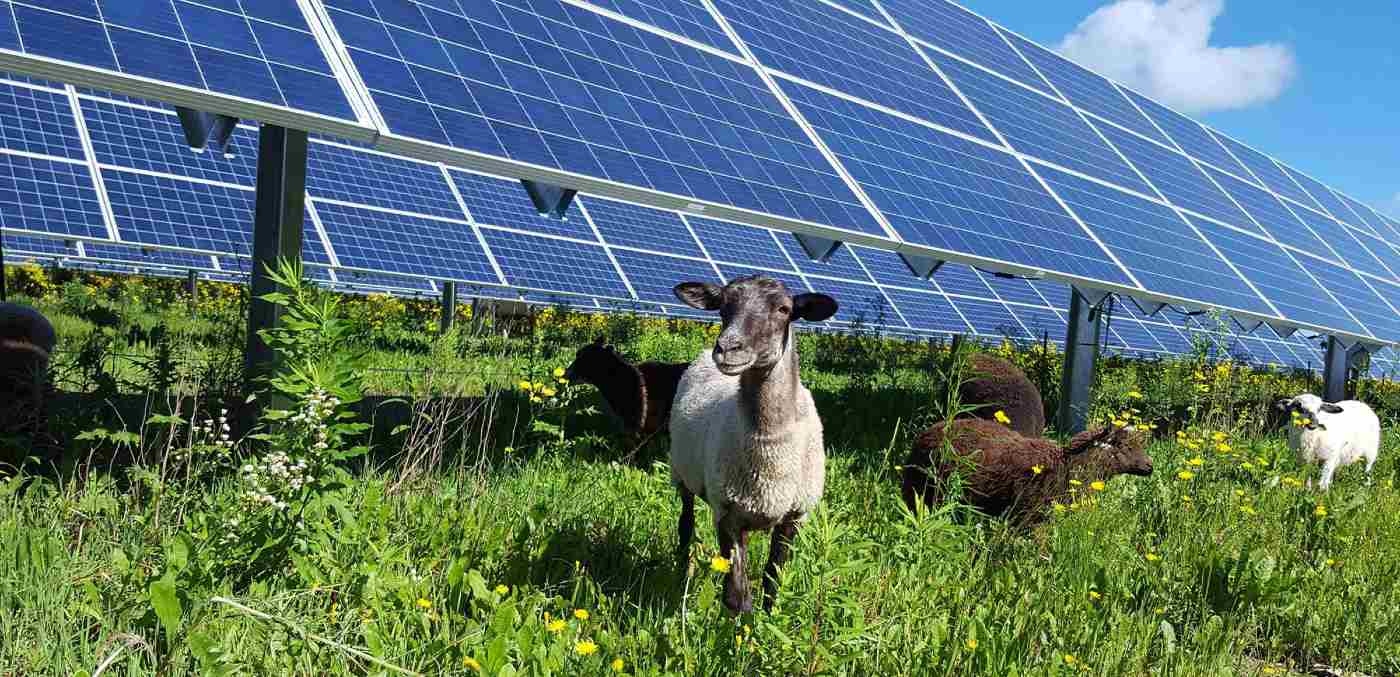Fox sedge grasses wave in the prairie breeze, monarchs bob on swaying milkweed, while sheep graze on wild Canadian rye and the sun’s warming rays kiss the solar panels above.
If that last part seems out of place, it’s only because this ingenious way to repair prairie biodiversity is only just being adopted in Minnesota, where what could be assumed is a quaint country pasture is actually a solar farm.

Instead of unadorned turf, bare ground or gravel, the terrain underneath the Enel Green Power’s solar farm in Chisago County is coated in wild native pollinator-supplying flowers, grasses, and herbs—providing a rich habitat for insects like butterflies, bees, and even small mammals.
The Minnesota Department of Natural Resources, Board of Soil and Water Resources, and Public Utilities Commission all encourage this sort of planting under solar farms. All sixteen of Enel’s solar farms are seeded with this prairie mix, and managed by Minnesota Natural Landscapes (MNL).
Star Tribune spoke with a woman charged with ensuring the pollinator-friendly vegetation standard among the solar panels was genuine, and not simply a ploy by the energy company to raise capital.
“We’ve been seeing great things in terms of the floral community and the pollinators using the habitat there,” Laura Lukens, the inspector for the St. Paul-based Monarch Joint Venture, told the Tribune. “I saw monarchs breeding at every site I visited.”

The grasses and flowers don’t only help the pollinators and monarchs, but their dark colors and shade keep the ground temperature lower than if it were bare grey stones or sand, which in turn helps keep the solar panels cooler, increasing their electricity generation.
Perhaps the most interesting detail is the deployment by MNL of sheep to graze the pasture-like mix.
The grazing of the sheep helps clear away dead brush and control weeds, which reduces fire risk. Their trampling of flowers and the earth below spreads seeds which attach to their wool and help to keep the soil healthy, while their dung fertilizes it after they pass.
CHECK OUT: The World Achieves its Target to Protect More Land, Adding 42%—the Size of Russia—in Last Decade
“This is the next phase of land management that we’re trying to normalize so it’s not this bizarre concept,” Jake Janski at MNL told the Tribune. “We’re trying to normalize using animals to do what animals did in nature. I’m sick of just putting Band-aids on. We’re trying to fix the prairie.”
This Minnesota mixture of modern and natural is a great example of how authentic, biodiverse landscapes can be fitted into so many of our society’s nooks and crannies.
POWER UP Some Good News in Friends’ Feeds—Share This Story…




















